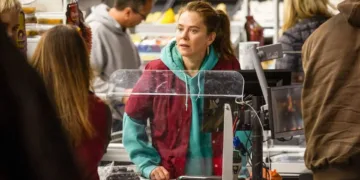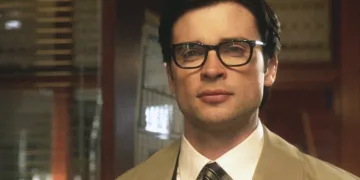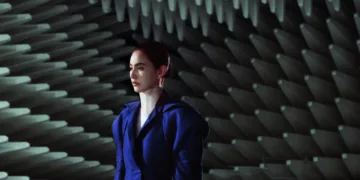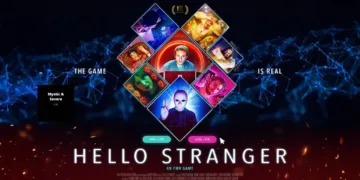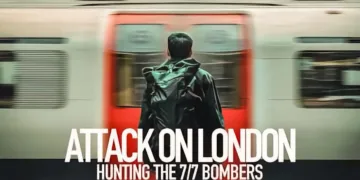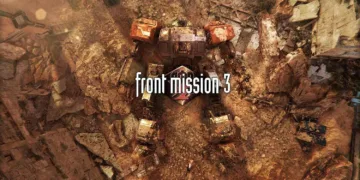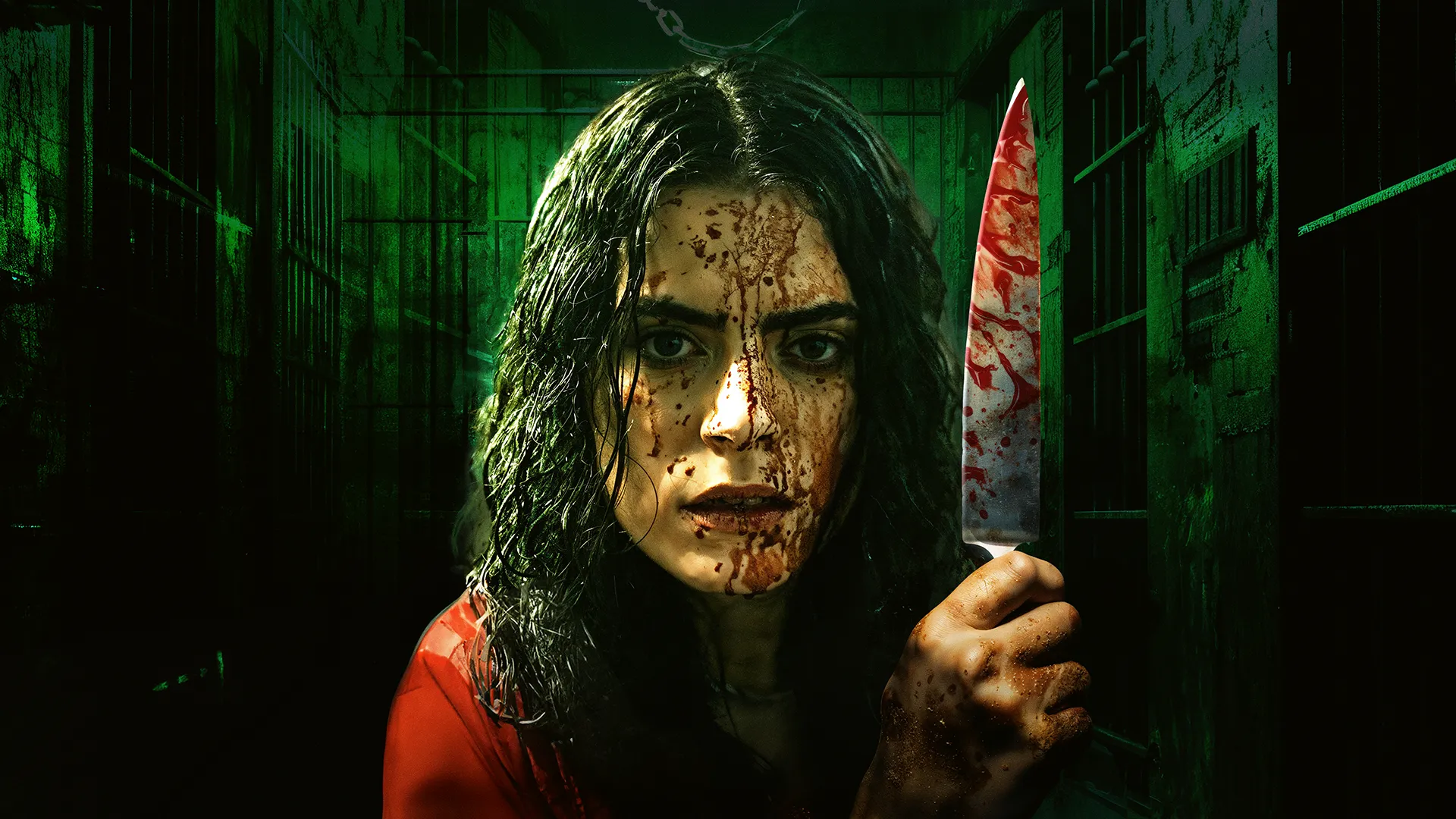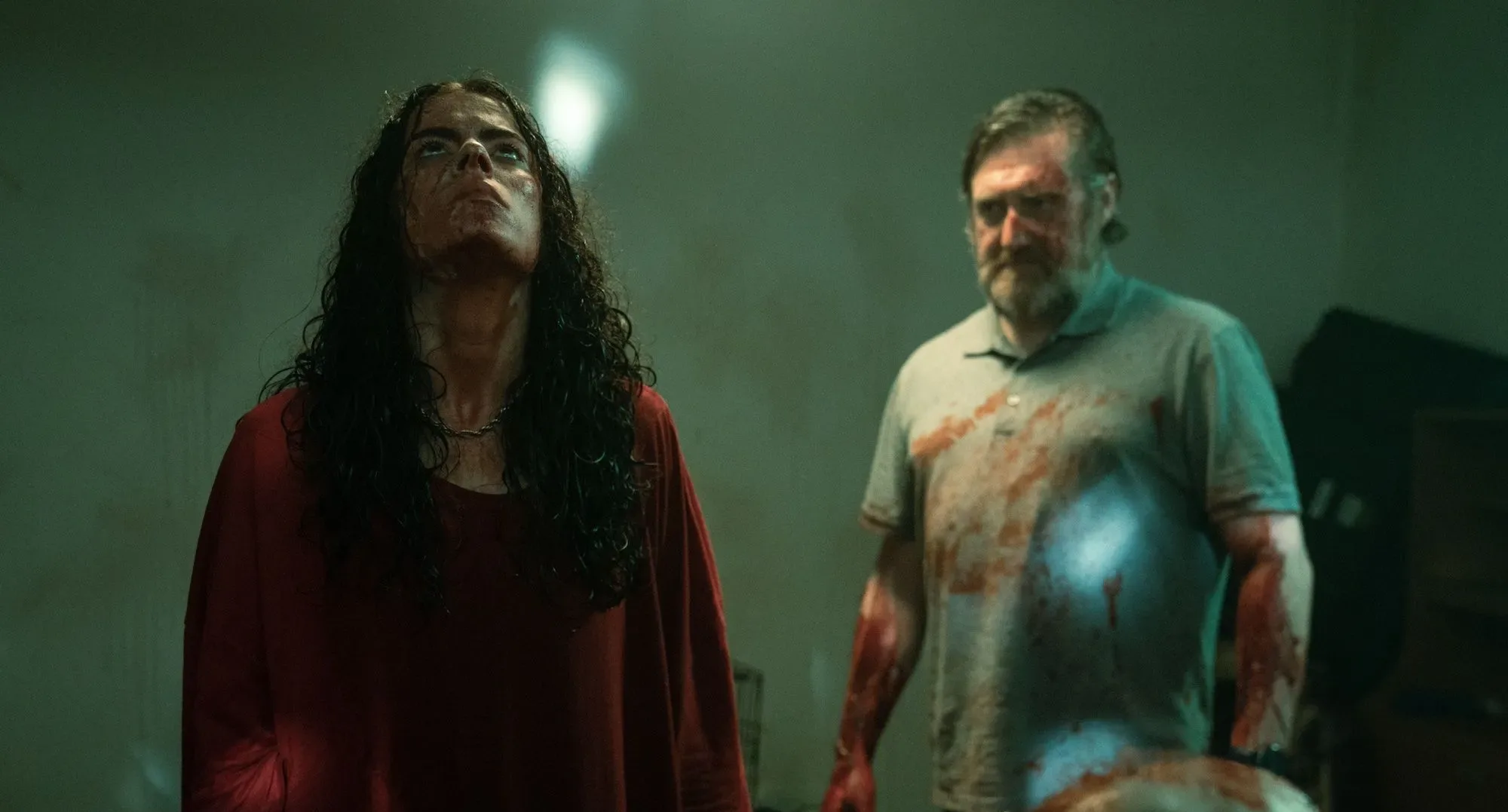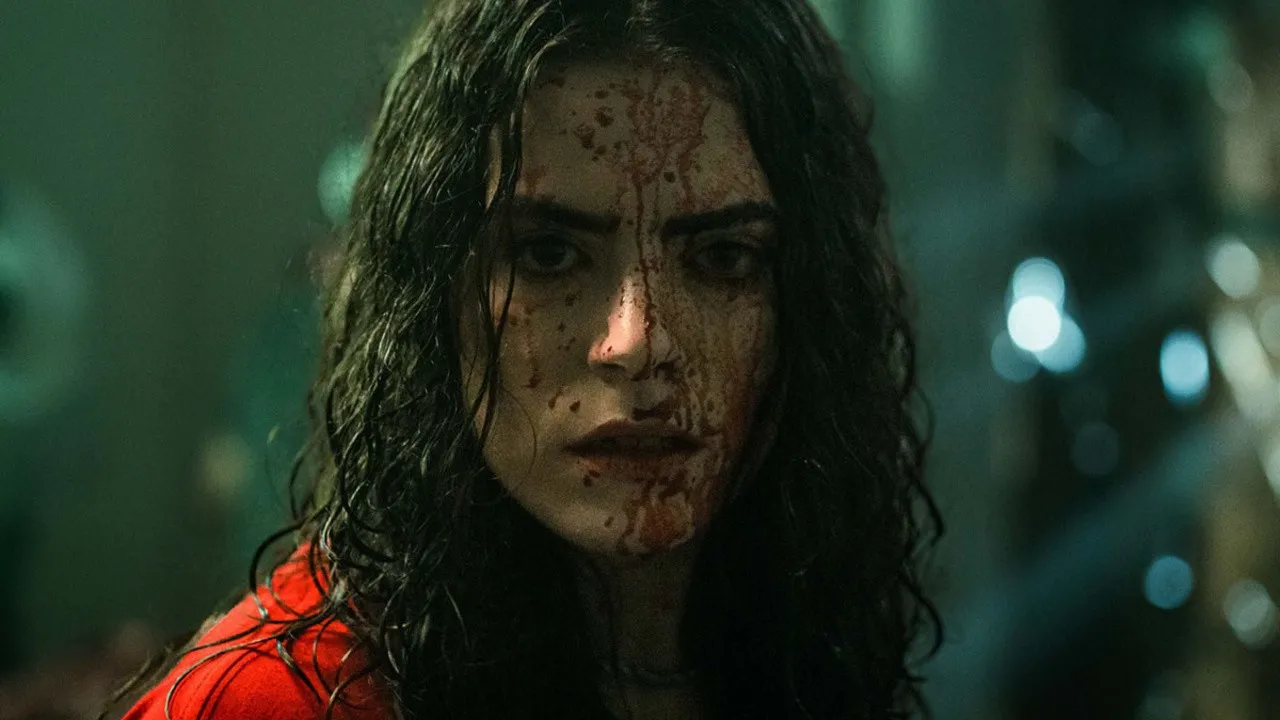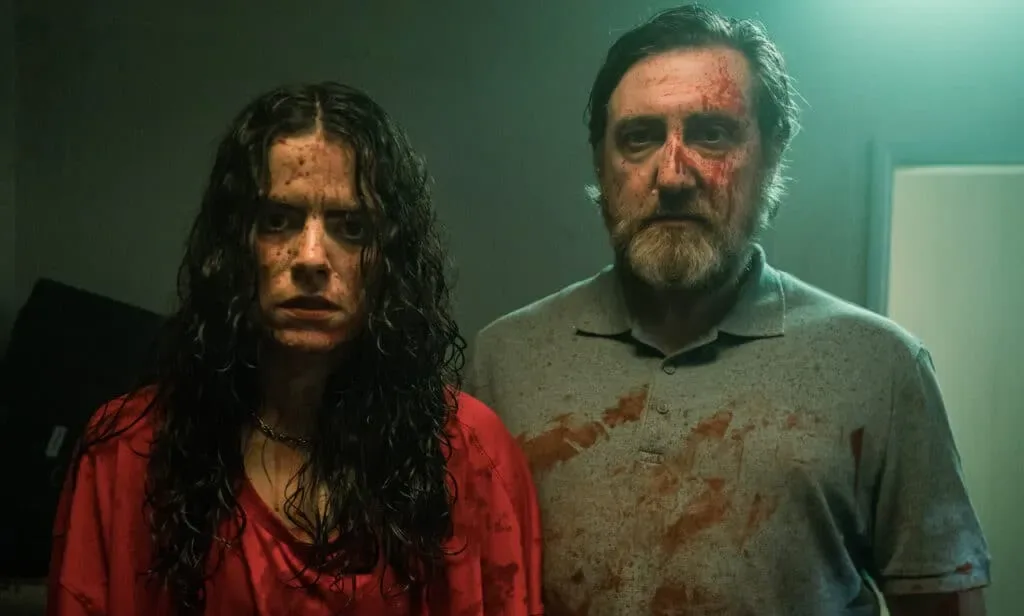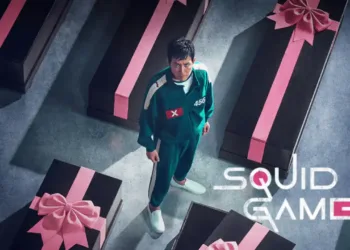Hayden Hewitt’s Cara unfolds over a tight 96 minutes, first screening to a sold‑out house at London’s Pigeon Shine FrightFest on August 25, 2024, before arriving digitally on February 3, 2025. Set against the grime‑tinged cityscape of contemporary England, the film positions itself at the intersection of kitchen‑sink social drama and relentlessly physical horror.
At its center is Cara, portrayed by Elle O’Hara, a young flatmate earning a precarious living via webcam shows on the sleazy “RedRoomFans” platform. Haunted by childhood abuse and terrified of returning to Sunnyside Hospital, she crafts a brutal plan of revenge that propels the narrative from muted realism into shock‑driven sequences.
The tonal shift—from cramped living‑room conversations to extended practical‑effects violence—echoes both British social‑realist traditions and global genre currents, whether in the stark naturalism of Scandinavian crime cinema or the visceral spectacle of East Asian shock horror.
Within this modern setting, public‑healthcare encounters and group therapy sessions take on added weight when contrasted with viewers’ own cultural experiences of mental‑health support. Therapy rooms feel simultaneously familiar and alien, inviting an international audience to reflect on how societal values shape care and coercion. As Cara inches toward her final act, we’re left considering how far a fractured individual can go before systemic failures become personal vendettas.
Blueprint of Tension and Release
The film begins by embedding us in Cara’s cramped flatshare, where every flicker of her webcam on “RedRoomFans” feels like a small betrayal of privacy. Her days blur together—meagre earnings, distant customer chatter—while muted flashbacks in sepia trace childhood abuse and cold hospital walls. Group therapy scenes add cultural texture: a British public‑health setting that contrasts sharply with clinical portrayals in Nordic noir or Japanese drama, yet taps into universal debates about care and control.
When Cara rejects another referral back to Sunnyside Hospital, narrative tension spikes. She forges an alliance with John Fisk, whose calm planning belies simmering volatility. We see weapons stashed beneath mattresses and overhear exchanges with figures like Paul Ashton, whose casual misogyny in chat windows echoes systemic indifference embodied by social‑worker Gregg Wilson’s ticking‑box approach.
Midway, the story drifts into hallucinatory sequences bathed in blue‑green filters. Across cinema, these distortions recall the surreal rifts of South Korean psychological thrillers, and in gaming terms, they function like environmental cues that signal a shift in level design. Reality warps, trust fractures—especially between Cara and her flatmate Ashley—transforming every whispered apology into a potential cutscene or stealth segment.
By the climax, Cara lures parents, doctors, abusive clients into her trap. Practical gore unfolds with the surgical precision of an action game’s boss fight, echoing final showdowns in survival‑horror titles. Yet when consequences land, cause and effect logic hangs in the air, inviting viewers to ponder whether justice was delivered or if the boundary between survivor and perpetrator has simply… moved.
Cultural Fault Lines of Trauma and Agency
Cara’s psyche is scarred by institutional abuse in a way that echoes both British social‑realist cinema and narrative mechanics in games like Hellblade: Senua’s Sacrifice, where distorted landscapes map a character’s inner turmoil. Here, “maladaptive daydreaming” becomes a diegetic trigger—much like a gameplay mechanic unlocking hallucination segments—that signals an unraveling mind. Flashbacks tinted in stark hues recall German Expressionism’s war‑scarred visions, yet the film roots itself in a distinctly English welfare context, inviting global audiences to compare how different societies treat mental‑health crises.
The webcam sequences on “RedRoomFans” frame sex‑work as a transactional spectacle, not unlike surveillance levels in stealth titles such as Dishonored, where every camera shutter feels invasive. Cara’s clients are voyeurs granted anonymity, mirroring how players observe an avatar’s vulnerabilities without moral consequence. This dynamic highlights a universal critique of digital commodification, yet the film’s gritty London setting inflects it with class tensions reminiscent of kitchen‑sink dramas, contrasting with glossier portrayals of online subcultures in North American cinema.
When Cara arms herself, the revenge plot unfolds like a branching narrative in choice‑driven games such as The Last of Us Part II: each violent act confronts viewers with ethical ambivalence. Sympathy for her character competes with horror at her methods, raising questions about whether systemic abandonment justifies vigilante action. This tension resonates across cultures—seen in South Korean thrillers where personal justice collides with social order—yet the film avoids neat moral resolutions, leaving both character and audience suspended.
Color‑graded hallucinations punctuate the “real” world, creating an unreliable narrator effect akin to puzzle segments in Control, where reality flexes to reflect the protagonist’s state. These interludes challenge viewers to distinguish truth from fantasy, a technique found in both European arthouse films and narrative‑driven indie games. The result is a shifting ground where eyewitness certainty erodes, underscoring how cultural and personal histories distort perception.
Beneath the gore and suspense lies a commentary on austerity and invisible suffering. The film’s depiction of a public‑health system stretched thin speaks to a global gig‑economy reality—parallel to how some free‑to‑play models exploit players with microtransactions. Cara’s plight reveals how structural neglect can warp identity and push individuals toward extreme measures, prompting us to ask whether entertainment that immerses us in suffering also compels real‑world empathy—or simply feeds our appetite for voyeuristic thrills.
Embodied Personas in a Transnational Frame
O’Hara brings a magnetic tension to Cara, her gaze shifting from hollow weariness during webcam scenes to coiled rage in therapy rooms. This mirrors character‑driven arcs in interactive dramas like Life Is Strange, where subtle facial cues guide player empathy. In a British social‑realist tradition—akin to Andrea Arnold’s work—her mannerisms ground the character in lived experience. Yet when Cara snaps, O’Hara channels a raw physicality reminiscent of Japanese psychological horror performers who let trauma pulse through every movement.
Vivash balances calm instruction with underlying volatility, much like an NPC companion in a narrative RPG whose loyalties can pivot without warning. His performance evokes the duality of figures in South Korean thrillers: courteous on the surface yet harboring dark intent. That shift—seen in Vivash’s barely restrained smile—underscores how cultural archetypes of the “supportive partner” can mask complicity in wrongdoing.
Roberts embodies entitled cruelty with minimal screen time, each leer and offhand comment cutting deep. This economy of characterization follows a Hitchcockian principle, where fleeting moments lodge in memory. Globally, his portrayal aligns with the archetypal predator in Nordic noir series, highlighting how casual misogyny crosses borders regardless of setting.
Dreyfus plays a system‑worn social worker whose robotic concern echoes bureaucratic detachment found in European art films. His clipped dialogue—checkbox after checkbox—parallels tutorial prompts in Western sandbox games that guide without genuine engagement. That performance underscores the tension between protocol and personal care in any culture’s mental‑health apparatus.
Michaela Longden’s Ashley registers as both confidante and bystander, her slow realization of Cara’s unraveling echoing side characters in narrative adventures who witness—but cannot prevent—the protagonist’s descent. Laurence R. Harvey’s café owner is a fleeting yet telling figure, reflecting communal apathy: a motif in global indie horror where small roles amplify social neglect. Absent parent figures hover offscreen, their guilt‑laden legacy shaping Cara’s revolt against both private and public institutions.
These performances, drawn from diverse acting traditions, converge to create a multilayered character study that challenges viewers to consider how cultural scripts inform our understanding of trauma and agency.
Visual Syntax and Temporal Pulse
Hayden Hewitt’s direction marries British kitchen‑sink grit with moments of visceral horror, crafting a rhythm that mirrors stealth‑action games where calm navigation suddenly yields to frantic combat. The opening’s measured pacing—lingering on domestic minutiae—echoes the temporal design of narrative adventures like Firewatch, lulling viewers before jolting them into sudden violence. Working within budget limits, Hewitt stages confrontations in tight flats and narrow corridors, turning constraints into claustrophobic set pieces that feel both lived‑in and uncanny.
Color grading emerges as a key storytelling device: the drab, grainy palette of the “real world” recalls post‑Thatcher social dramas, while hallucinatory interludes bloom in blue‑green hues, akin to the spectral filters in Korean thrillers that signal a fractured psyche. This visual code serves as a cultural cipher, drawing parallels to horror titles such as Alan Wake, where color shifts guide players through layers of reality and delusion.
Camera choices oscillate between hand‑held intimacy and static isolation. Close‑ups during therapy and online‑sex scenes place us uncomfortably close to Cara, much like first‑person POV in found‑footage cinema or VR horror experiences. By contrast, deliberate wide shots frame her solitude within the flat’s corners, evoking the emotional distance found in European arthouse films.
Editing reinforces the film’s jagged heartbeat: a slow‑burn buildup punctuated by abrupt cuts into gore, reminiscent of jump‑scare timing in survival‑horror titles. Extended takes during revenge sequences heighten tension through uninterrupted immersion, challenging audience expectations of quick‑cut spectacle.
Practical effects and sound design form a final layer of texture. Prosthetic blood and bone‑cracks land with tangible weight, yet their visible craft can jar against the film’s push for authenticity. Audio cues—echoing squeaks, sudden silence—underscore each strike, much like diegetic soundtracks in immersive games that signal imminent danger, leaving viewers alert to every creak in the narrative’s architecture.
Auditory Architecture and Physical Shock
Hayden Hewitt’s soundtrack unfolds like a minimalist score in Nordic thrillers, where silence bears as much weight as melody. Sparse piano motifs and low drones emerge at key moments—echoing the brooding atmospheres of Puig’s The Wailing—while diegetic sounds (keyboard clicks from Cara’s stream, ragged breathing in therapy rooms, distant London traffic) root us in her world. This interplay of ambient noise and score mirrors design in exploration‑heavy games like Journey, where environmental audio guides emotional pacing.
Hallucinatory sequences introduce distorted voices and echoing whispers, reminiscent of Japanese horror’s use of vocal dissonance to unsettle (think Ringu’s static hiss). Sudden lapses into silence function like stinger triggers in survival‑horror titles, depriving viewers of comfort and sharpening each subsequent strike.
Practical gore effects land with tactile brutality: prosthetic beheadings and dismemberments feel weighty in the frame, akin to satisfying feedback in physics‑driven combat systems such as those in Resident Evil 4. Yet their visible craftsmanship occasionally pulls the viewer out of the moment, raising questions about whether overt FX artistry undercuts psychological immersion.
Editing ties these elements together—each bone‑crunch timed to Cara’s breakdown, slow‑motion snaps aligning with her spiraling focus, and quick‑cut montages echoing panic cycles in interactive sequences. As sound and gore collide, the film asks us to consider how sensory engineering across cultures can both deepen empathy and provoke distance…
Aftermath of Agency
Cara delivers a raw portrait of trauma that refuses easy answers, merging British kitchen‑sink austerity with moments of graphic spectacle more common in East Asian shock cinema. Its social‑realist roots often collide with outright practical‑effects violence, creating jolting tonal shifts that risk unevenness even as they challenge genre expectations. Audiences versed in Scandinavian crime dramas may recognize the deliberate pacing and muted palette, while fans of Korean psychological horrors will feel the impact of sudden, unflinching gore.
Viewers should approach with caution: the explicit content isn’t suited for the faint of heart. Yet those drawn to character‑driven narratives—echoing choice‑driven adventures in gaming—will find rich moral ambiguity at every turn. Cara’s psychological unraveling parallels mechanics in titles like Heavy Rain, where each decision reverberates through the story, inviting global viewers to weigh empathy against spectacle.
The film’s depiction of mental‑health care—its ticking‑box sessions and underfunded support—may strike different chords depending on one’s cultural context, whether in systems where therapy is commodified or where stigma still reigns. More than a showcase of Hayden Hewitt’s ambition and Elle O’Hara’s fearless performance, Cara lingers as an unsettling question: when personal justice becomes its own form of entertainment, how do we reconcile our role as witnesses—and at what point does empathy tip into voyeurism?
The Review
Cara
Cara’s unflinching portrayal of trauma and wrenching physicality makes for a memorable yet sometimes uneven experience that will resonate with viewers drawn to social‑realist horror.
PROS
- Elle O’Hara’s intense, nuanced lead performance
- Clear visual cues (color filters) to track mental shifts
- Gritty social‑realist grounding lends weight to horror
- Pacing that builds tension before sudden shocks
- Honest depiction of mental‑health care flaws
CONS
- Abrupt tonal jumps between drama and gore
- Practical‑effects brutality sometimes breaks immersion
- Supporting roles lack depth
- A few pacing lulls in the middle act
















